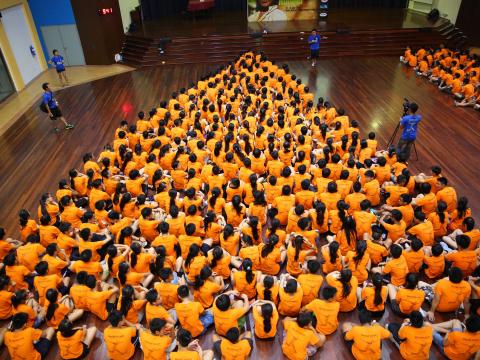Can you bring together the Global and the Local in Humanitarian Action?

Julian Srodecki is World Vision's Technical Director of Humanitarian Grants.
The localisation debate
Recently the humanitarian sector held a global consultation for the World Humanitarian Summit in Geneva with over 1,000 representatives from all over the world. One of the most passionately argued topics was around the localisation of aid.
The debate covered many issues. With the top ten INGOs getting nearly a third of resources, are local NGOs treated unfairly? Do the existing dynamics favour large western INGOs? How do you balance the need to deliver, current levels of capacity and putting local people at the heart of emergency response?
Testing our assumptions
Within this debate, I think we need to reassess the generalisations we use and the presumption that we have a clear binary view of the world, where organizations are either Southern and disempowered, or Northern/ International and in competition with the South. In an increasingly diverse world, organisational models have also diversified. In World Vision, old assumptions of” North” and “South” are challenged by the fact that around one third of the organisation’s funding now comes from the East, from Asia. If companies like HSBC can bring together the benefits of being global and local can NGOs do the same?
Where international, national and local meet
The 2015 World Disasters Report looks at local actors and their critical role in humanitarian action. It provides a welcome contribution to the discussion by moving beyond simple notions of local, national and international actors, to something better able to handle the messy and complex realities of our world. Using the Red Cross/ Red Crescent movement as an example, the report shows how the local and the international can be brought together to meet the needs of people impacted by disaster.
The World Disasters Report also recognises World Vision’s “progressive partnership model” (p 69, p109) which makes long term investments in national affiliates[1]. This is how it works:
National affiliates
- World Vision has developed four levels of national affiliates and made a 20 year investment in developing indigenous governance capacity at the national level.
- 53 of 95 offices now have some form of a national board or advisory council. This is possible because of a long term presence and ongoing commitment to countries where World Vision works.
- In most countries, World Vision plans to remain for at least another decade going forward. This enables national affiliates to develop the long term relationships needed to do good work with communities, national civil society and host governments, before, during and after humanitarian disasters.
Funding
- Our long-term presence is enabled by a stable funding base through child sponsorship and supported by 19 funding offices around the world.
- Local fundraising in middle-income economies is also becoming more important.
- Complimenting national capacity with global systems is becoming increasingly important to meet complex donor requirements around grants and, for example, counter -terrorism legislation.
Management and staff
- World Vision’s national entities directly managed 80 of the 90 emergencies that the partnership responded to in 2013.
- When responding to each of the UN level 3 emergencies in 2014/15, an average of 88% of World Vision’s staff were nationals of that country. Of the remaining 12% many of these were nationals of neighbouring countries or what has traditionally been considered part of the global south.
Does all this mean that World Vision has got the answer to the localisation question and perfected how to bring together the global and the local in humanitarian action? Of course not, I think it’s one model that should fit within a broad ecosystem of initiatives as the sector looks to increase support for sustainable national and local capacity. With unprecedented needs increasing globally, I think we need to avoid reductionist labels and identify the contributions that all kinds of NGOs can make to local and national humanitarian action.
Read more from Julian:
- Global vs local, can you have your cake and eat it?
- Is closing the humanitarian funding gap as simple as saying yes (to new sources of funds)?
- Why isn't there enough money? Two ideas to transform humanitarian financing.
[1] As defined by Global Humanitarian Assistance in both the 2014 and 2015 Global Humanitarian Assistance reports.